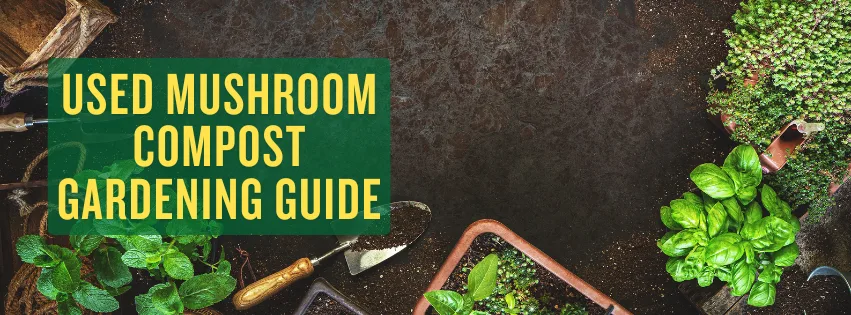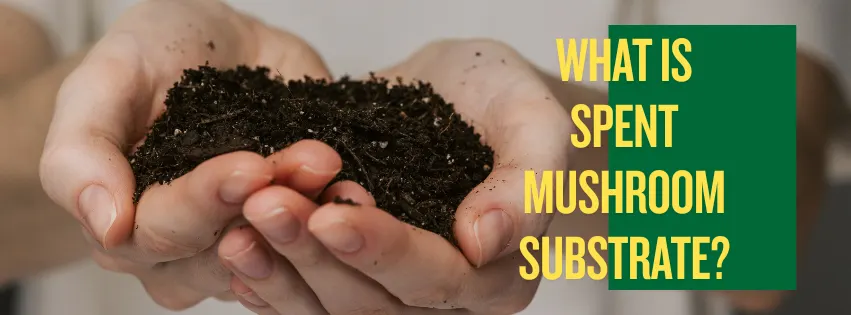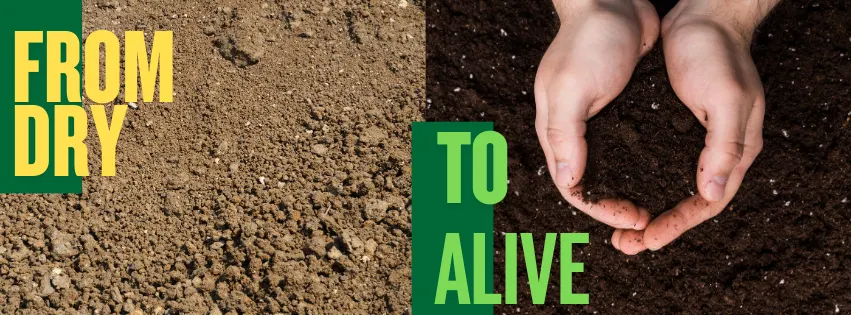
Used Mushroom Compost Gardening Guide
Gardening with compost is one of the most rewarding and sustainable ways to nurture healthy soil. Among the many compost options available, used mushroom compost (spent mushroom substrate) stands out for its ability to improve soil fertility and structure.
This compost is not purely organic, as it comes from mushroom farms where gypsum, lime, or other inputs are often used during cultivation. However, it remains a natural, nutrient-rich soil conditioner that gardeners can safely use when applied correctly.
Used mushroom compost helps loosen compacted soil, retain moisture, and enhance microbial life — making it ideal for a wide range of vegetables, flowers, and lawns. To use it effectively, it’s essential to understand its properties, benefits, and proper handling methods.
What Is Used Mushroom Compost?
Used mushroom compost is the recycled byproduct of mushroom farming, composed of the materials originally used as mushroom substrate — typically straw, hay, poultry litter, gypsum, and other organic residues.
After mushrooms are harvested, this leftover substrate is aged and composted into a rich soil amendment. It contains balanced nutrients like nitrogen (N), phosphorus (P), and potassium (K) along with organic carbon that improves soil health.
The Basic Production Steps
Mixing: Straw, poultry litter, and gypsum are blended.
Inoculation: Mushroom spawn is introduced.
Harvesting: Mushrooms are grown and picked.
Composting: The leftover material is cured and matured for reuse.
This process makes used mushroom compost a recycled soil improver that reduces waste from mushroom industries while supporting sustainable gardening and farming.
Key Benefits of Gardening with Used Mushroom Compost
Improves Soil Structure – Loosens heavy clay soils and adds body to sandy soils, improving aeration and root growth.
Enhances Moisture Retention – Reduces the need for frequent watering, useful in drought-prone areas.
Provides Balanced Nutrition – Offers slow-release NPK nutrients that support healthy foliage and flowering.
Supports Soil Microbes – Encourages beneficial microorganisms that aid nutrient cycling.
Suppresses Weeds & Soil Diseases – Used as mulch, it helps deter pests naturally.
Eco-Friendly Recycling – Converts mushroom waste into a valuable soil amendment, promoting circular agriculture.
Affordable Option – Typically cheaper than vermicompost or animal manure, suitable for large gardens and farms.
Considerations Before Using Mushroom Compost
While beneficial, used mushroom compost has an alkaline pH (7.5–8) and may contain residual salts from lime and gypsum used in mushroom production. To ensure safe use:
Avoid Acid-Loving Plants like azalea, blueberry, or hydrangea.
Leach or Age the Compost: Let it sit in the open for 2–3 weeks and rinse with water to reduce salt levels.
Test Soil pH: Maintain balance before and after adding compost.
Buy from Reputed Sources: To avoid contaminants and ensure matured, odor-free compost.
How to Use Used Mushroom Compost in the Garden
| Use Type | How to Apply | Benefits |
|---|---|---|
| Soil Amendment | Mix 1 part compost with 3 parts garden soil. Work into top 15–20 cm before planting. | Improves soil structure and boosts fertility for healthy growth. |
| Mulch | Spread a 2–3 cm layer around plants, keeping it away from stems. | Retains moisture, suppresses weeds, and moderates soil temperature. |
| Enrichment for Poor Soil | Apply a 2–3 inch thick layer and mix thoroughly into the soil. | Revitalizes degraded or sandy soils and adds long-lasting organic matter. |
| Container Mix | Blend 20–30 % compost with potting soil and cocopeat. | Enhances drainage, aeration, and nutrient availability for potted plants. |
Application Methods for Different Plant Types
Vegetables: Mix compost into topsoil before sowing or transplanting. Ideal for tomatoes, chilies, and leafy greens.
Flowers & Shrubs: Use as mulch or blend with garden soil to enhance bloom quality.
Fruit Trees: Apply 3–5 kg per tree around the root zone; mix with soil and cover with mulch.
Container Plants: Combine 25 % mushroom compost with 50 % soil and 25 % sand/cocopeat.
Start with small amounts and observe plant response before increasing. For nutrient-sensitive plants, dilute compost further with plain soil.
Tips for Safe & Effective Use
Leach or Age Compost: Always allow compost to rest or rinse before use to reduce salt content.
Test Soil pH: Maintain balance for optimal nutrient absorption.
Avoid Over-Application: Excess nutrients may stress plants.
Combine with Other Organics: Mix with garden compost, vermicompost, or cow dung for a more balanced mix.
Monitor Plants: Adjust rates based on plant performance and soil response.
Used Mushroom Compost vs. Other Compost Types
| Feature | Used Mushroom Compost | Yard Waste Compost | Vermicompost |
|---|---|---|---|
| pH Level | Slightly alkaline (7.5–8.0) | Neutral (6.8–7.2) | Slightly acidic to neutral (6.5–7.0) |
| Nutrient Release | Slow and steady release of nutrients | Moderate nutrient availability | Fast nutrient release with higher NPK |
| Best For | Vegetables, flowers, fruit trees, lawns | General soil improvement in gardens | Nurseries, seedbeds, vegetable crops |
| Organic Matter Content | High, improves structure & moisture retention | Moderate, good for light conditioning | Rich in humus and microbial life |
| Cost & Availability | Low cost, bulk availability from farms | Low to moderate, widely available | Higher cost, smaller quantities |
Mushroom compost’s moisture-holding and soil-conditioning abilities make it ideal for large-scale gardens and farms, while vermicompost is better suited for nurseries and high-value crops.
Where to Source Quality Used Mushroom Compost
Local Nurseries & Garden Centers: Often stock matured compost in bags.
Direct from Mushroom Farms: Bulk quantities at lower cost (verify salinity and pH).
Online Retailers: Convenient for smaller gardeners; check reviews and seller details.
Always ensure the compost is well-aged, crumbly, and earthy-smelling, not soggy or sour.
Key Takeaways for Gardeners
Used mushroom compost is an affordable, sustainable soil conditioner that improves soil health, boosts moisture retention, and supports healthy plant growth.
It is not a fully organic compost, but when properly aged and applied, it becomes a powerful tool for gardeners and farmers seeking eco-friendly, low-cost soil enrichment.
As Masanobu Fukuoka said, “The ultimate goal of farming is not the growing of crops, but the cultivation and perfection of human beings.” Using recycled composts like mushroom manure brings us closer to that goal — nurturing both soil and soul.


